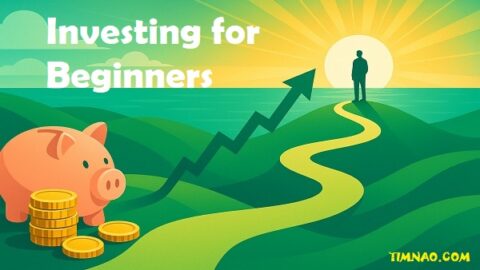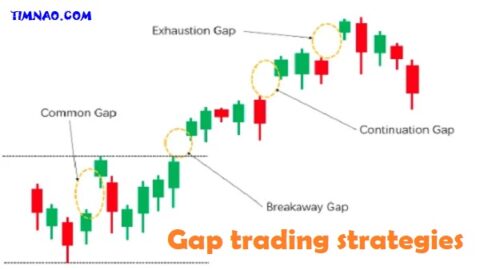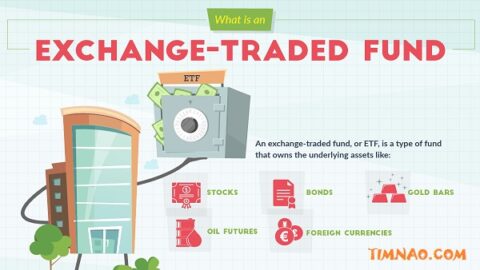Startup Business Development: 11 Powerful Q&A for Faster Growth 🚀
Why This Topic Confuses Beginners (and Why It Matters for Your Income)
If you’re a new founder or an ambitious side-hustler, “startup business development” can feel like a big, fuzzy buzzword.
You hear about:
- Mission, vision, values
- Funnels, business models, and KPIs
- AI tools, growth hacks, and venture capital
…all at once. No wonder most beginners feel stuck.
The problem is that most resources live at the extremes:
- Either too basic and inspirational (purpose, mindset, big vision)
- Or too technical and advanced (complicated growth models, investor terms, Agile jargon)
When you’re stuck in the middle, you don’t know:
- What to do this week to get closer to revenue
- How AI and automation really fit into your day-to-day work
- Whether you should start a simple service, a SaaS, or even a marketplace
- When fundraising makes sense — or when it will just distract you
This confusion is expensive. It can easily cost you:
- Months of wasted work building the wrong thing
- Missed opportunities to sign clients early
- Burnout from trying every “hack” instead of having a clear startup growth framework
This article fixes that by answering 11 real questions beginners ask about startup business development — with practical, step-by-step answers you can actually apply to earn more, grow faster, and avoid painful mistakes.
Quick Overview of the Basics (For Context)
Before we dive into the 11 Q&A, let’s build a shared, simple picture.
What Is Startup Business Development?
Startup business development is the bridge between your idea and consistent revenue.
It’s not just one thing. It’s the combination of:
- Strategy – Who you serve, what you offer, and why you’ll win
- Execution – How you get customers, deliver value, and get paid
- Optimization – How you improve your numbers and systems over time
In practice, startup business development includes:
- Choosing a specific target customer and problem
- Designing a business model (how money flows in and out)
- Building a simple, testable offer
- Finding repeatable ways to win and retain customers
- Using tools (including AI for startup growth) to work faster and smarter
You can think of it as:
“Everything that turns an idea into a real, growing business.”
A Simple 3-Stage Startup Growth Framework: Start → Build → Grow
To avoid overwhelm, we’ll use an easy, practical framework:
- Start (Foundation)
- Clarify your niche, problem, and offer.
- Decide on a simple business model (service, SaaS, product, etc.).
- Set clear goals for the next 30–90 days.
- Build (Validation & Systems)
- Create a minimum version of your product or service.
- Test it with real people and collect feedback.
- Build basic systems: a simple funnel, automation, and tracking.
- Grow (Scaling & Leverage)
- Double down on what works (channels, messaging, pricing).
- Use AI and automation to scale without burning out.
- Consider fundraising, partnerships, or platform strategies once the engine is working.
This startup growth framework gives you a mental map. Our 11 questions will plug into these three stages.
Why This Matters for Money (Not Just Pretty Plans)
A lot of founders love planning. They build beautiful slides and canvases… but no one is paying them.
Startup business development matters because it forces you to:
- Talk to real customers early and often
- Focus on actions that are close to money (sales, offers, delivery)
- Build systems that turn one-off wins into reliable, repeatable revenue
In other words, it’s how you move from being “inspired” to being paid.
Now let’s jump into the 11 powerful Q&A.
The Most Common Questions (Q&A Section)
Q1. What is a simple roadmap to go from idea to first paying customer?
Most beginners get lost because they try to do everything at once: logo, website, brand colors, social media, complex funnels.
You don’t need any of that to get your first paying customer. Here’s a simple roadmap:
Step 1: Pick a sharp niche and problem
Ask yourself:
- Who do I understand or have access to? (e.g. designers, coaches, local gyms, ecommerce brands)
- What painful, annoying problem do they deal with every month?
Example:
“Local gyms struggle to keep members longer than 3 months.”
Step 2: Write a one-sentence offer
Fill this in:
“I help [specific customer] get [specific result] without [specific pain].”
Example:
“I help local gyms keep more members for 6+ months without spending extra on ads.”
Step 3: Turn that into a simple paid offer
Start with something you can deliver manually:
- A service (e.g. retention consulting, email campaigns, member onboarding)
- A package (e.g. “90-Day Member Retention Boost Program”)
- A tiny product (e.g. template pack + implementation call)
Step 4: Find 20–30 people who match the niche
You can:
- Search on LinkedIn
- Join relevant Facebook groups or forums
- Walk into local businesses (for offline niches)
Step 5: Reach out with a value-first message
Example script:
“Hi [Name], I’m working on something to help [niche] with [problem].
I’d love to learn how you’re handling this right now.
If you’re open to a 20-minute call, I can share a few ideas and get your feedback.”
Step 6: Pre-sell or offer a small paid pilot
On calls:
- Ask about their current problems and costs.
- Show your idea briefly.
- Offer a discounted pilot for 3–5 clients.
You know you’re on the right track when someone says:
“Yes, I’ll pay to try this.”
Your goal is not perfection. Your goal is one real customer who pays you money to solve a problem.
Q2. Is startup business development still relevant in the age of AI?
Yes — more than ever.
AI tools like ChatGPT, Claude, and Notion can help you write, plan, and automate. But they cannot:
- Choose your niche and strategy for you
- Decide which problem is worth solving
- Understand your customer’s emotions and context
- Build trust and relationships with real people
Think of AI as a powerful assistant inside your startup business development process, not a replacement.
Here’s how AI for startup growth fits in:
- Use AI to research markets faster.
- Use AI to draft content and offers, which you then refine.
- Use AI to analyze data from surveys or interviews.
- Use AI to automate repetitive communication (follow-up, reminders).
But you still need human judgment to pick a direction, say “no” to distractions, and build a real brand.
Q3. How do I choose the right business model: service, SaaS, or marketplace?
Your business model is how you create, deliver, and capture value. For most beginners, the choice is between:
- Service
- SaaS / software product
- Marketplace / platform
Here’s a practical comparison:
Service Model
- You deliver something manually: consulting, coaching, design, marketing, operations, etc.
- Best for: Fastest path to cash, low/no code, solo founders or small teams.
- Strengths:
- You can start in days, not months.
- You learn deeply from each client.
- You can charge high prices quickly.
- Limits:
- Tied to your time and energy.
- Harder to scale without systems or teams.
SaaS or Digital Product
- You build software or a product that many people can use.
- Best for: Founders who like tech, want recurring revenue, or already validated a problem via services.
- Strengths:
- Scalable, can serve many customers at once.
- Recurring revenue (subscriptions) can be very stable.
- Limits:
- Takes time and money to build and refine.
- You still need marketing and support.
Marketplace / Platform
- You connect two sides (buyers and sellers, hosts and guests, etc.).
- Best for: Experienced founders with strong industry insight and networks.
- Strengths:
- Big upside if you hit network effects.
- Can become a “default platform” in your niche.
- Limits:
- Hardest to start — you need both sides.
- Often needs capital, patience, and complex operations.
Beginner-friendly rule:
- Start with a service to get close to the problem and earn money.
- Turn your repeatable work into productized services or simple tools.
- Only then consider SaaS or marketplace models when you clearly see the opportunity.
Q4. How can I validate my idea without a big budget?
Validation means proving that real people care enough to pay.
You don’t need ads or a full app to validate. You just need:
- A clear audience
- A simple promise
- A way to collect and measure interest
Here’s a lean validation process:
- Build a simple landing page (1–2 days)
- Drive small but targeted traffic
- Post useful content in relevant communities with a link.
- Ask your network if they know people who fit the niche.
- Reach out to potential customers individually and point them to the page.
- Collect meaningful signals, not just likes
- Email sign-ups = interest
- Booked calls = strong interest
- Deposits or pre-orders = strongest validation
- Talk to the people who sign up
- Ask what they expected, what they need, what they’ve tried.
- Use their exact language to improve your offer and copy.
- Decide using simple thresholds
- If you can’t get 10–20 serious signals in 2–4 weeks, something is off:
- The audience is wrong
- The problem isn’t urgent
- The offer isn’t clear
- If you can’t get 10–20 serious signals in 2–4 weeks, something is off:
Then change one major element and test again, or move on to a better idea. Validation is about saving time and money, not about getting it perfect.
Q5. How do I actually use AI and automation in my early-stage startup?
This is where many classic business books feel outdated — they barely mention automation or AI.
You can use AI for startup growth in these key areas:
1. Market and customer research
- Ask AI to list customer segments, pains, and possible solutions.
- Generate interview scripts and survey questions.
- Summarize interview notes into patterns.
2. Messaging and content
- Draft headlines, landing page copy, and email sequences.
- Turn a single long article into:
- 5–10 social posts
- A short video script
- A newsletter issue
You then edit for accuracy and personality.
3. Outreach and sales
- Use AI to write personalized outreach emails based on a prospect’s profile.
- Create follow-up sequences that feel human, not robotic.
- Analyze responses to see which messages work best.
4. Operations and internal systems
Use tools like:
- Notion or Airtable for organizing tasks and data
- Zapier or Make to automate:
- New lead → add to CRM → send welcome email → create task
- New payment → send onboarding email → invite to Slack/Discord
Start small: pick one painful repetitive task and automate it. The goal is to save hours every week so you can focus on high-value work.
Q6. How do I organize my work with OKRs and Agile sprints as a beginner?
Being busy is not the same as making progress. OKRs and Agile help you stay focused on what grows your startup.
OKRs (Objectives and Key Results)
An OKR looks like this:
- Objective: Inspiring, qualitative goal.
- Key Results: 2–4 measurable outcomes that show if you hit the objective.
Example for a 3-month period:
- Objective: “Validate my offer and get initial recurring revenue.”
- Key Results:
- Conduct 30 customer interviews
- Sign 10 paying customers
- Reach $1,000 monthly recurring revenue
Agile sprints
A sprint is a short period (1–2 weeks) where you commit to specific tasks.
For a solo founder or tiny team:
- Choose 1–2 OKRs for the quarter.
- Plan sprints like this:
- 1–2 tasks for product (improving your offer)
- 2–3 tasks for growth (content, outreach, partnerships)
- 1–2 tasks for systems (automation, organizing data)
- At the end of each sprint:
- Review what you finished
- Check impact on your Key Results
- Decide what to start, stop, or continue
Use simple tools like Trello boards or a Notion task list. The goal is clarity, not complexity.
Q7. What if I only have 1–2 hours per day to work on my startup?
You can still make real progress with limited time — but you must be ruthless with priorities.
Think of your time in three buckets:
- Customer-facing activities – talking to people, doing sales, serving clients
- Offer/product improvement – making your service or product better
- Systems and tracking – making future work easier and measuring results
If you have 1 hour per day:
- 30 min → Customer-facing (outreach, calls, sending proposals)
- 20 min → Improve one tiny part of your offer (script, onboarding, template)
- 10 min → Review numbers and plan tomorrow
If you have 2 hours per day:
- 60 min → Customer-facing
- 40 min → Product/offer improvement
- 20 min → Systems (automation, organizing tasks, learning)
Ask yourself daily:
“What is the one action today that can move me closer to a paying customer?”
If a task doesn’t help you get, keep, or learn from customers, it’s probably a lower priority at this stage.
Money-Focused Questions (Applying the Knowledge to Earn)
Q8. How can I turn this framework into a side income as fast as possible?
To turn this into real money quickly, aim for simple, direct value:
- Start with a service, not software.
- Services can be sold and delivered quickly.
- You can use AI to boost your capacity.
- Build a tiny, results-focused offer.
Examples:- “I’ll help you book 5 extra qualified sales calls this month.”
- “I’ll clean up your onboarding emails to reduce churn in 30 days.”
- Price it in a way that feels like a no-brainer.
- For early clients, you can offer:
- A lower “beta” price, or
- A results-based guarantee (e.g. partial refund if no impact).
- For early clients, you can offer:
- Use AI and automation to over-deliver.
- Generate content, analyze data, and automate follow-ups so you can serve more clients without working all night.
- Collect testimonials and case studies.
- After each project, ask:
- “What changed for you?”
- “Would you be open to a testimonial?”
- After each project, ask:
Then gradually:
- Increase your prices
- Tighten your offer
- Replace manual work with templates and tools
That’s how you turn a startup business development framework into a real money-generating side business.
Q9. What are realistic earning scenarios for beginners?
Every niche and person is different, but here are realistic ranges if you apply yourself consistently for 6–12 months.
Service-based (freelance, consulting, productized services)
- Months 1–3:
- Objective: Learn and validate
- Possible: $500–$2,000/month
- Months 4–6:
- Objective: Stabilize and refine
- Possible: $2,000–$5,000/month
- Months 7–12:
- Objective: Specialize and systemize
- Possible: $5,000–$10,000+/month
Simple SaaS or digital product
- Months 1–3:
- Often small or no revenue while building and validating
- Months 4–6:
- $500–$2,000/month if you find a working channel
- Months 7–12:
- $2,000–$10,000/month+ if you have good retention and ongoing traffic
Marketplace/platform
- Much more variable and risky
- Early months are usually about supply/demand building, not revenue
- Can grow quickly later if you hit strong network effects
These are not guarantees. They show what can be possible if you:
- Focus on one direction
- Talk to customers weekly
- Improve your offer and systems continuously
The key is not the exact number; it’s the trend — your learning, revenue, and confidence should be slowly moving up.
Q10. How long does it usually take to see results?
“Results” can mean different things. Let’s define them clearly:
- First signal of interest: replies, positive feedback, booked calls
- First money: your first paying customer
- First consistent income: enough monthly revenue to matter to you
For many beginners:
- Signals of interest: 2–6 weeks (if you’re talking to people often)
- First money: 1–3 months
- More stable income: 6–12 months
You can speed this up by:
- Choosing a niche where you already have skills or connections
- Selling a simple service first
- Using AI and automation to work faster and smarter
- Avoiding the trap of building complex tech before you sell anything
Measure progress not only in dollars, but also in:
- Number of conversations
- Number of offers made
- Number of experiments run
Those actions compound into money.
Q11. When and how should I think about fundraising or VC?
Fundraising is one of the most misunderstood parts of startup business development.
Many beginners think:
“If I just get an investor, everything will be easier.”
In reality, raising money too early can:
- Distract you from customers
- Force you into a growth path you’re not ready for
- Dilute your ownership heavily when your startup is still fragile
Ask yourself:
- Is my idea truly capital-intensive?
- Hardware, deep tech, regulated sectors = often yes.
- Simple SaaS, services, niche tools = often no.
- Can I reach clear validation without outside money?
- Can you find paying customers with your own effort and small tools?
- If yes, that’s usually the better path.
- What do early-stage investors care about?
- A large enough market
- A capable, committed team
- Real traction (users, growth, revenue)
- A scalable model and story
Practical approach:
- Use the Start → Build → Grow stages to build traction first.
- When you can show:
- Real demand
- Consistent growth
- A plan for using capital to accelerate (not just survive)
…then consider angels or seed investors.
Remember: Fundraising is a tool, not a trophy. It should support a working engine, not be your only hope.
Mistakes, Myths, and Red Flags
Myth: “I need a perfect business plan before I launch.”
Reality: You need a clear direction and a simple experiment, not a 50-page document.
Why it’s dangerous:
- You spend months guessing instead of talking to customers.
- You become emotionally attached to a plan instead of being flexible.
- You delay the only real test that matters: “Will anyone pay?”
Better approach:
- Write a 1-page business overview (customer, problem, offer, channel, price).
- Run a small, fast experiment (outreach, landing page, beta offer).
- Update your plan regularly based on real-world results.
Myth: “AI will replace the need for business development.”
Reality: AI is powerful, but it still needs a human strategy to aim it in the right direction.
If you believe AI will do everything:
- You might create generic, forgettable products.
- Your messaging sounds like everyone else.
- You ignore the slow, deep work of understanding your market.
Correct approach:
- Use AI as a smart assistant inside your startup growth framework.
- Keep positioning, priorities, and relationships as human responsibilities.
- Let AI speed up work, not decide what work matters.
Mistake: Chasing “growth hacks” instead of fundamentals
It’s tempting to constantly look for the latest hack: a new ad trick, social viral formula, or automation stack.
But without:
- A clear audience
- A painful problem
- A strong offer
…growth hacks only make you go faster in the wrong direction.
Focus first on:
- Talking to customers
- Refining your offer
- Improving your product or service
Then you can layer on:
- Better funnels
- Ads or partnerships
- Advanced analytics and AI
Red Flag: Scaling before you’re ready
Some founders try to scale too soon:
- Spending on ads before their offer converts
- Hiring a team before they know what works
- Building complex platforms before getting any paying users
The risk:
- You burn cash
- You create complexity
- You become trapped in a fragile structure
Healthy growth looks like:
- Validate → Systemize → Scale
- Improve your unit economics (profit per customer) before you chase volume
- Use simple tools and automations before you hire too many people
Putting It All Together: A Simple Action Roadmap
Here’s how to turn this entire article into concrete action.
In the Next 24 Hours
- Choose one niche and one problem.
- Write your one-sentence value proposition.
- Make a list of 10–20 potential customers you could talk to.
- Use an AI tool to:
- Draft a short explanation of your idea
- Draft an outreach email or DM
Your only win for today: get your first 1–3 conversations booked.
In the Next 7 Days
- Have at least 5 real conversations with potential customers.
- Take detailed notes: pains, current solutions, money spent.
- Build a simple landing page with your offer and CTA.
- Set up one basic automation, for example:
- New signup → welcome email + “book a call” link
By the end of 7 days, you should have:
- Better language for your offer
- Real feedback
- A place to send people (your page)
- A small system that works while you’re offline
In the Next 30 Days
- Aim to run one small paid pilot or beta with 3–10 clients or users.
- Define one main OKR for the month, e.g.:
- “Sign 5 paying clients at $200 each”
- Break that OKR into two or three 2-week sprints, focusing on:
- Outreach and sales
- Offer and delivery
- Simple systems and automation
Track:
- How many people you contacted
- How many replied
- How many calls you had
- How many said “yes” and paid
At the end of 30 days, review:
- What worked better than expected?
- What didn’t work at all?
- Where did the money actually come from?
Use those answers to adjust your startup business development strategy for the next month.
Optional Extra Questions
Should I focus on one idea or experiment with several?
In the very early days, it’s okay to explore 2–3 ideas at a high level. But once you see a bit of traction or strong interest for one of them, you should:
- Commit to that idea for at least 6–12 weeks
- Stop switching randomly
- Double down on talking to customers and improving the offer
Focus beats variety once you have a promising direction.
Do I need a co-founder to start?
A co-founder can help, but you don’t need one to begin.
You can:
- Start alone
- Use AI and automation as your “force multiplier”
- Hire freelancers or agencies for specialized work
If you do bring in a co-founder later, choose someone who compliments your strengths, not a clone of you.
Key Lessons & Takeaways
- Startup business development is the core engine that turns ideas into stable income — it’s more than marketing or product alone.
- AI for startup growth is a huge advantage, but only when plugged into a clear strategy with human judgment, not used as a magic fix.
- A simple Start → Build → Grow framework, combined with real customer conversations, beats complex planning with no feedback.
- Services are usually the fastest path to money; they teach you the market and can fund later SaaS or platform plays.
- Using OKRs and Agile sprints keeps you focused on what actually moves revenue, even if you only have 1–2 hours a day.
- Fundraising and VC are optional tools, not the starting line. Prove demand, then decide whether capital will help you scale a working engine — not rescue a broken one.
Disclaimer
The information in this article is provided for educational and general informational purposes only. It is not financial, legal, tax, investment, or business advice, and it should not be treated as such.
You are solely responsible for any decisions you make based on the content in this article. Before starting a business, investing money, changing your pricing, or entering into any contracts or funding agreements, you should consult with a qualified professional such as a lawyer, accountant, or licensed financial advisor.
Any examples of income, pricing, client results, or growth scenarios mentioned in this article are illustrative only. They are not guarantees or promises of actual or future performance. Your results will depend on many factors, including your skills, effort, market conditions, competition, timing, and level of execution.
References to tools and platforms (such as AI tools, SaaS products, CRMs, or automation services) are included for convenience and illustration. They do not constitute endorsements or official partnerships, and their features, pricing, and policies may change over time.
Using AI, automation, and online platforms also involves risks, including data privacy, service outages, policy changes, and potential compliance issues. You are responsible for ensuring that any tools or strategies you use comply with applicable laws, regulations, and platform terms of service in your jurisdiction.
By reading and applying any ideas from this article, you agree that the author and publisher are not liable for any loss, damage, or negative outcome—financial or otherwise—that may arise directly or indirectly from your use of this information.
☕️ Enjoyed this article? Support the creator!
If this guide helped you move one step closer to growing your startup, consider buying me a coffee! Your support keeps the content flowing and fuels more in-depth resources for founders like you.
👉 Buy me a coffee here: https://timnao.link/coffee 🚀💛










